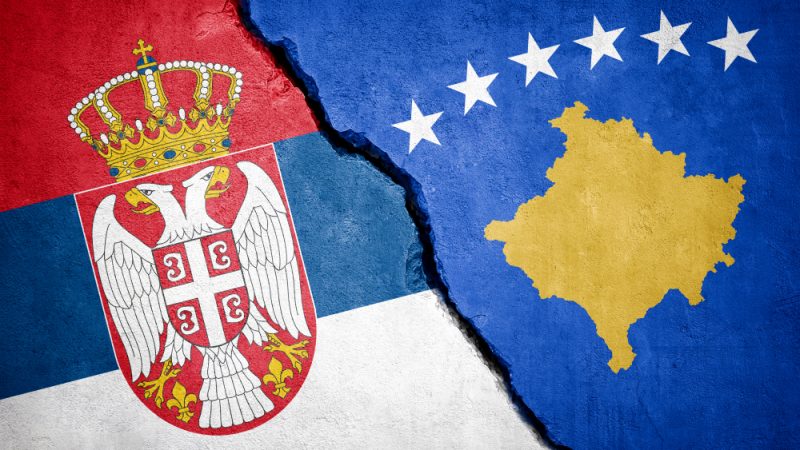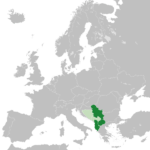Dragan Smigić’s stick and the four lessons from the north
Veton Surroi
The first lesson of the events of these days in the four northern municipalities of Kosovo is that the conflict between Kosovo and Serbia is not over. Even after 24 years, since Serbia signed the capitulation with NATO, it still has not signed the peace and cooperation agreement with Kosovo. During various negotiation processes, for which the European Union has been authorized, Serbia has consistently defended its position on keeping the conflict with Kosovo unfinished. This conflict is called the “final status” of Kosovo, which according to Serbia is still undefined, and for the determination of which Serbia’s final consent is needed.
The international community and the representatives of Kosovo have been accommodated with this attitude since the beginning of the negotiation process in 2011. The EU believed it had overcome this attitude with the “Basic Normalization Agreement”, which began as the Franco-German Plan. This plan had to establish from the beginning the principle of relations between the two sovereign states, which at the moment do not recognize each other. But Serbia remained consistent with its position, even not admitting at all that it has agreed with the “Basic Normalization Agreement”.
In Serbia’s interpretation, there is no signature of the president or his verbal agreement for the “Basic Normalization Agreement”, therefore it does not exist.
Consequently, it is within this logic that a Dragan Smigic, a policeman from Rudari, a village in the Municipality of Kurshumli, appears at the barricades in Zveçan and beats KFOR soldiers with his official baton. He beats the “occupiers” in the logic of Serbia’s power.
The second lesson is that logic has the elasticity of conflict. The more the conflict is prolonged, the more this particular form of logic is accommodated in this prolongation.
Sending a plainclothes policeman—along with hundreds of others who share the dress code, crowd discipline, and aggressiveness of a trained mob and crowd-control assault group—against NATO units. In Kosovo, it should not have made sense. A state like Serbia no matter how twisted its ruling logic is, would still be kicking itself if it attacked NATO. But, such a logic has undergone elasticity.
Serbia has challenged the limits of the decency of a European state on two primary levels. It has challenged it in the case of Russia, by feeding its people in state and para-state propaganda with a determination from above to lean on the side of the aggressor in the war in Ukraine, and therefore complete distancing from European politics. He also challenged it in the case of Kosovo, following the narrative of the unfinished conflict that should not end with the independence of Kosovo.
This elasticity brings the logic to inversion.
So, it would be common sense for Serbia to align itself with the European continent, to which it belongs, and to distance itself from Russia, and at the same time to find ways of accommodation with independent Kosovo as part of good neighborliness, so that integrated and supported financially and politically. But in the inversion of logic, Serbia has shown that it has European and American attention if it simultaneously pushes the limits of its support for Russia and non-normalization of relations with Kosovo.
This inversion has a reason for existence. Serbia has successfully transformed its role from a state that is being pressured to be a political part of the continent (“do this or you will face sanctions”) to a state that is waiting to be enticed to be a political part of the European continent. Dragan Smigić beating KFOR soldiers is a symbol of inversion. Now Serbia must be begged to be polite; it was once expected to be so, and if not the punishment followed.
The third lesson is that not everything has to do with Kosovo. Events in the north concerned Ukraine, Russia and Belgrade. In official Pristina, it might seem perfectly logical to send three mayors with special police to their offices. But sending in special police, although part of the legality, could not compensate for their lack of legitimacy. Even, far beyond this debate between legality and legitimacy, from the perspective of European security, the Zvecan barricades were seen as a good opportunity to test NATO when it is engaged in supporting Ukraine. When Dragan Smigiqi beats NATO soldiers in Zveçan, his baton is raised in Moscow. From Putin’s perspective, he is a volunteer in the war that Russia is waging against Western civilization.
Consequently, Dragan Smigic’s stick is a warning to the peaceful demonstrators in Belgrade, to that silent part of Serbian society that the government is afraid of, that they too are opponents of the great war that is being waged against the West.
Finally, it’s not the first time. When Milosevic’s power felt that it was in danger, he declared war on the neighboring peoples. When he once brought out the tanks against his own opposition in 1991, he quickly managed to consolidate himself by directing them against Croats, Bosniaks and Albanians.
Thirty years later, it is not difficult to understand that the stick of Dragan Smigic, which beat the NATO soldiers, also beats the citizens of Belgrade who are peacefully protesting against the power of violence in Serbia.
The fourth lesson is like the first. The conflict between Kosovo and Serbia has not ended. Barricades are erected and dismantled, soldiers and policemen are beaten, deployed and retreat-
ed, big words are uttered and forgotten – but in the end, however, a negotiation process must
take place that reaches an end to the conflict.
This achievement cannot be done without the USA and the EU and the United Kingdom, and without some of the European countries such as Germany, France and Italy, with greater involvement in matters of peace and security in Kosovo.
Dragan Smigiqi and his stick that beats KFOR soldiers should be considered as an episode, but a serious episode, of confronting the fact that peace is not built with the illusion of a ceremonial declaration that a normalization agreement has been reached.
It’s time for serious action. Perhaps the first step for Kosovo would have to be an agreement on how to proceed, with the biggest supporters of its independence, based on an outline of the roadmap that this country believes in.





